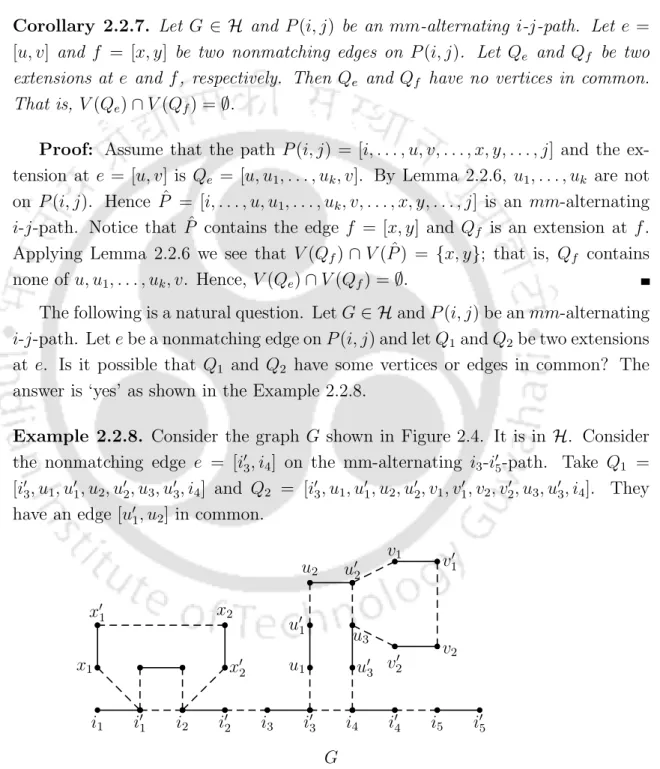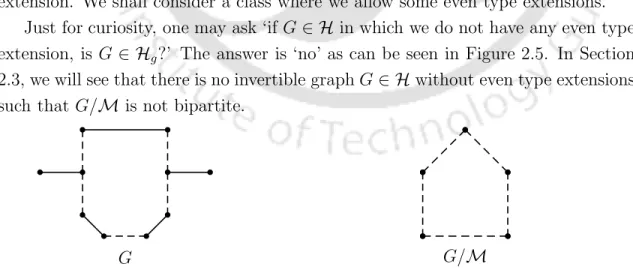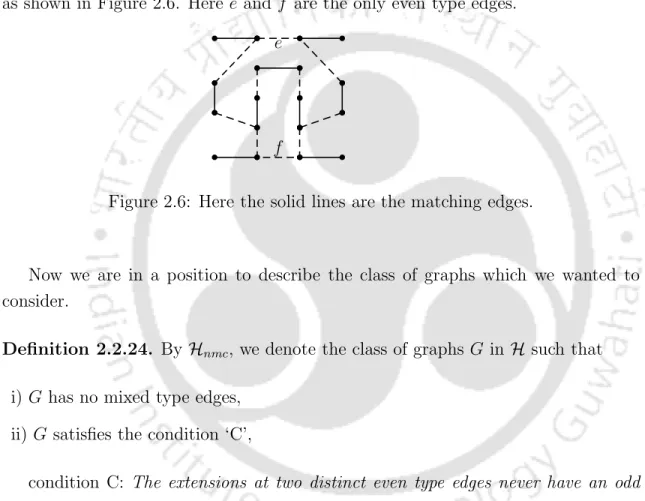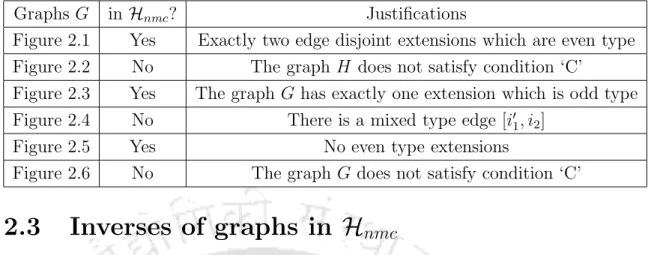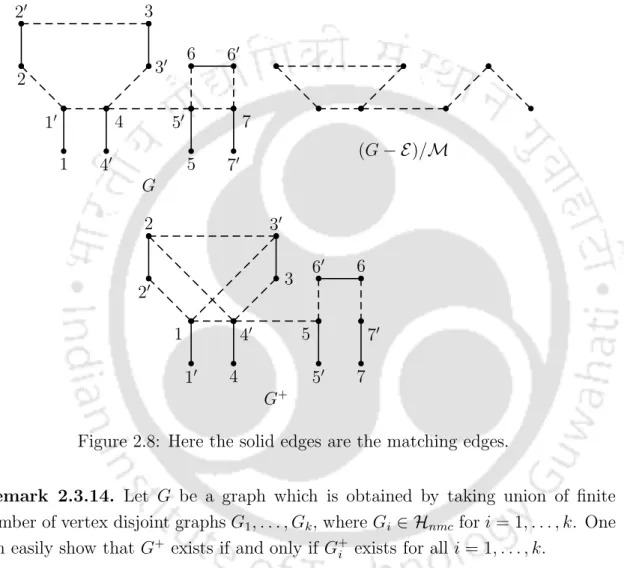However, there are many connected bipartite graphs with unique perfect matchings for which these conditions cannot help. We provide a constructive structures of the inverse graphs of a class of bipartite graphs with unique perfect matchings.
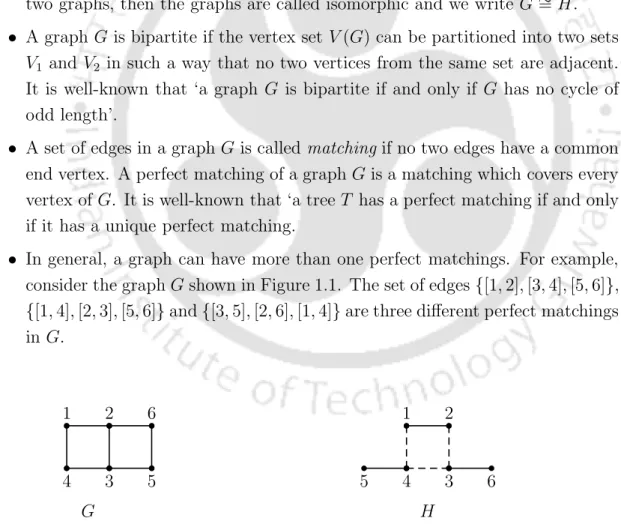
Nonsingular graphs
Inverses of graphs
We consider the problem of providing a class of graphs in H containing Hg and the unicyclic graphs which have inverses. Can we characterize the class of graphs in Hg whose inverse is also in Hg.
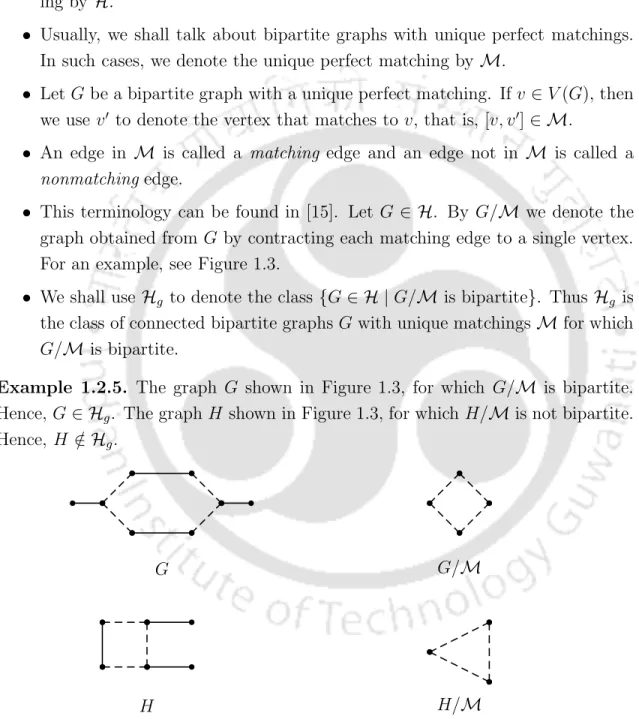
Reciprocal eigenvalue properties
A natural question here is to provide a class of graphs in H (larger than the non-singular trees) where the statements i)–iv) in Theorem 1.3.2 are equivalent. Note that just as in Theorem 1.3.2, point v) we have given a constructive characterization of the graphs that satisfy points i)–iv), we also have a corresponding constructive characterization of the graphs.
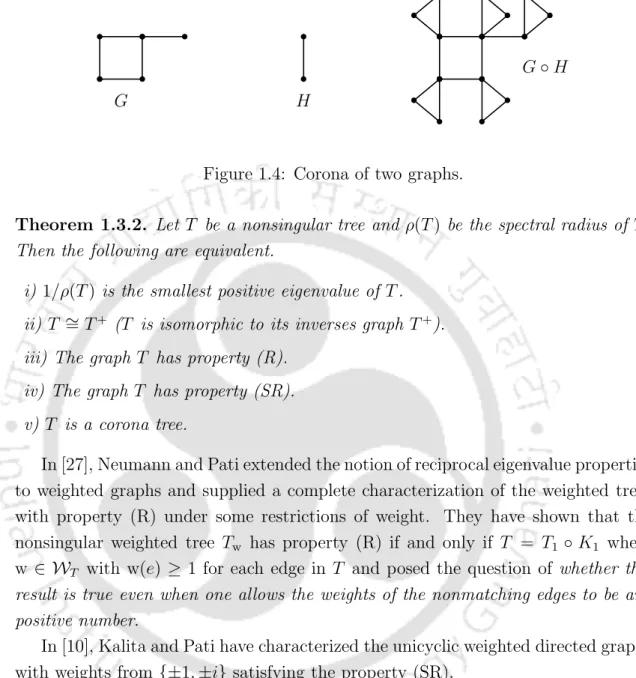
Why do we study the inverse graph and the reciprocal eigenvalue
Why do we consider the class of bipartite graphs with unique perfect
These results generalize Theorem 4.2 of [27] while providing an answer to the problem posed in the same article.
Organization of the Thesis
That is, if SA(G)−1S ≥ 0 for some signature matrix S, then we define G+ as the weighted graph with adjacency matrix equal to SA(G)−1S. The following theorem was proved by Godsil in [15, Theorem 2.2]. ThenG+ exists if and only if both of the following conditions hold:. i) Every non-empty undirected interval G[i, j] in G possesses an inverse. ii) The digraph ΓG is dual.
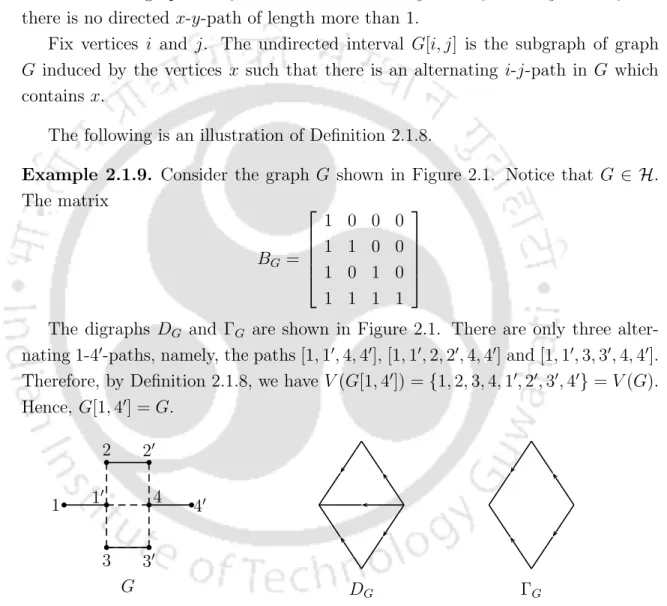
Types of nonmatching edges
We say that P is a mm-alternate path (match-match-alternate path) if the edges are [u1, u2],[uk−1, uk]∈ M. The minimal path in the graph G∈ H from node u to node v is a mm-alternating u-v-path that does not contain an extension of even type (on some mismatched edge in G).
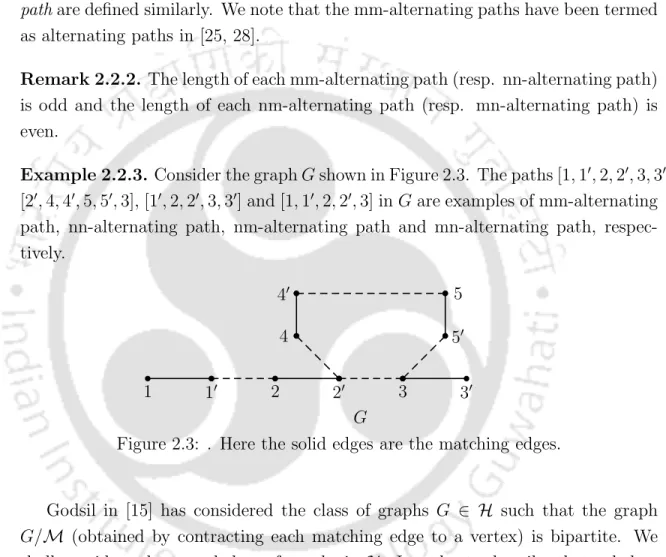
Inverses of graphs in H nmc
Now suppose that there is a cycle CG that contains an odd number of odd-type edges, some matching edges, and some even-type edges. Then we get a closed loop with an odd number of odd type edges and some matching edges. This closed step gives us a cycle containing an odd number of odd-type edges and a few matching edges.
It follows that any path from i to j must contain an even number of odd edges.
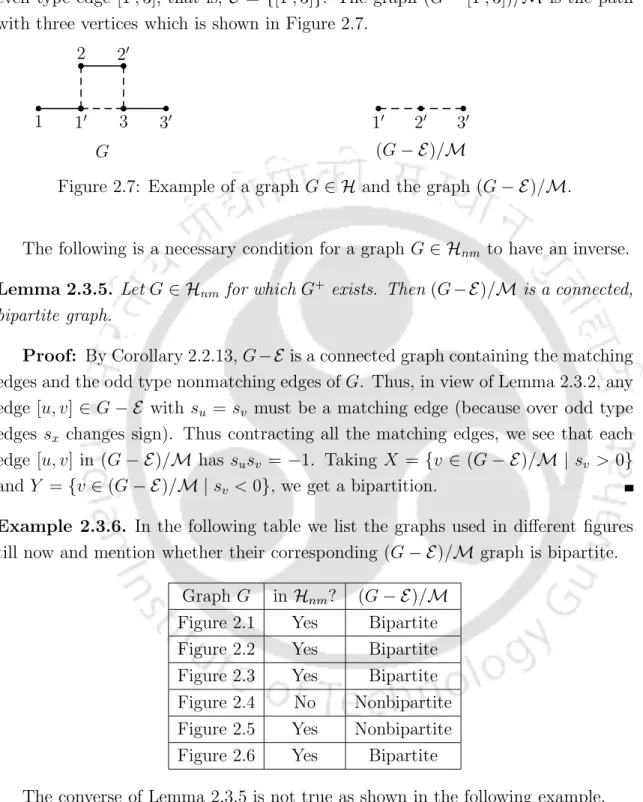
Conclusion
Then G is strongly self-dual if and only if both of the following conditions are met: i) Every non-empty, undirected interval G[i, j] in G is strongly self-dual. ii) The digraph ΓG is bipartite. For an undirected interval graph G for which digraph ΓG is bipartite and every undirected interval G[u, v] 6= G is strongly self-dual, we cannot use Theorem 3.1.5 to show that G is strongly self-dual. Using Lemma 2.3.1, we can easily construct the inverse graph G+ of the graph G. The inverse graph G+ is shown in Figure 3.1. Ø ØÙÙÚ ÚÛÛÜ ÜÝ ÝÞ Þß ß.
At this point in this thesis we cannot explain 'why'. the graph in Figure 2.1 is a self-inverse graph, using the known results.
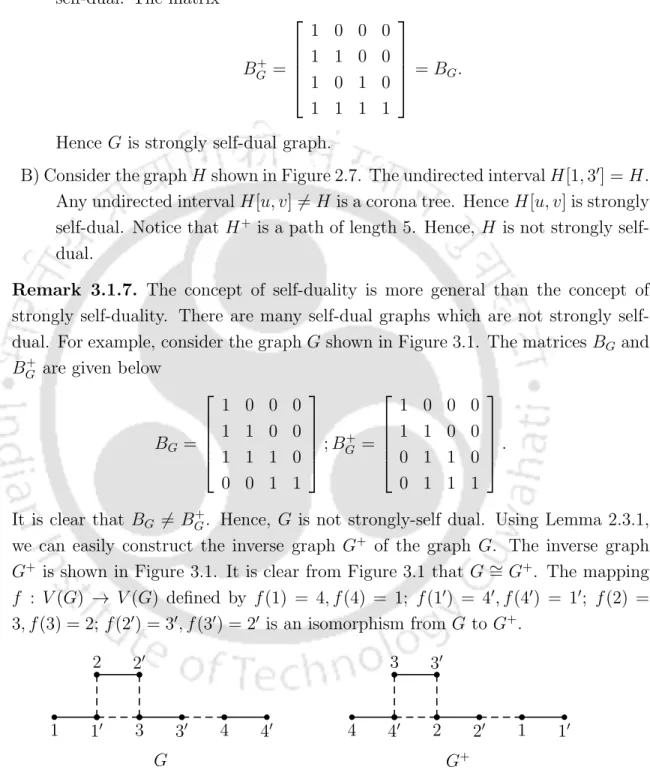
Self-inverse graphs in H nmcs
The following result further analyzes a matching edge on an even-type extension in a self-inverse graph in Hnmcs. Let H be the graph obtained from G by deleting all extensions of even type while keeping the endpoints of the extensions. Let H be the (coronal) graph obtained from G by deleting all extensions of even type while keeping the terminal vertices of the extensions.
Note that, by Lemma 2.2.12, any mismatched edge in an even-type extension is odd-type.
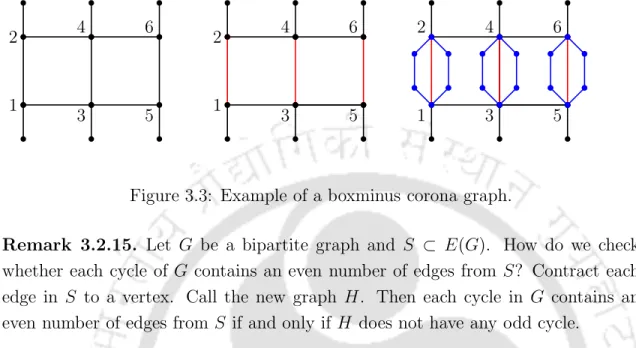
Inverses of unicyclic graphs in H
Unicyclic graphs in H with unicyclic inverses
Then G+ ∈ Hu if and only ifG has exactly one minimal path of length 5 that does not contain [10,3]. We get two minimal paths P1m and P2m of length 5 that do not contain [10,3], so that P1m and P2m are subpaths of P1 and P2, respectively. But the degree of 2 and 20 can never be more than 2 at the same time, otherwise we have two minimal paths of length 5 that do not contain [10,3].
Every non-trivial tree branch at 10 (or 3 and 4) is a crown tree and the quasi-hanging vertex of this tree branch is adjacent to 10 (or
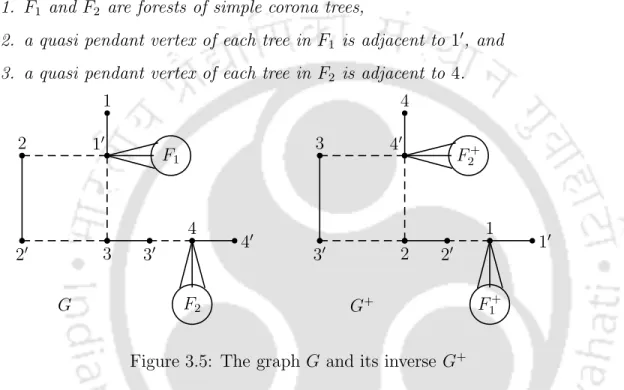
Self-inverse unicyclic graphs in H
Proof: The inverse graph G+ of graphG is constructed in Theorem 3.3.13 and G+ shown in Figure 3.5. Proof: The inverse graph G+ of graphG is constructed in Theorem 3.3.13 and G+ shown in Figure 3.6. Proof: The inverse graph G+ of graphG is constructed in Theorem 3.3.13 and G+ shown in Figure 3.7.
Proof: The inverse graph G+ of the graph is constructed in Theorem 3.3.13 n G+ shown in Figure 3.8.
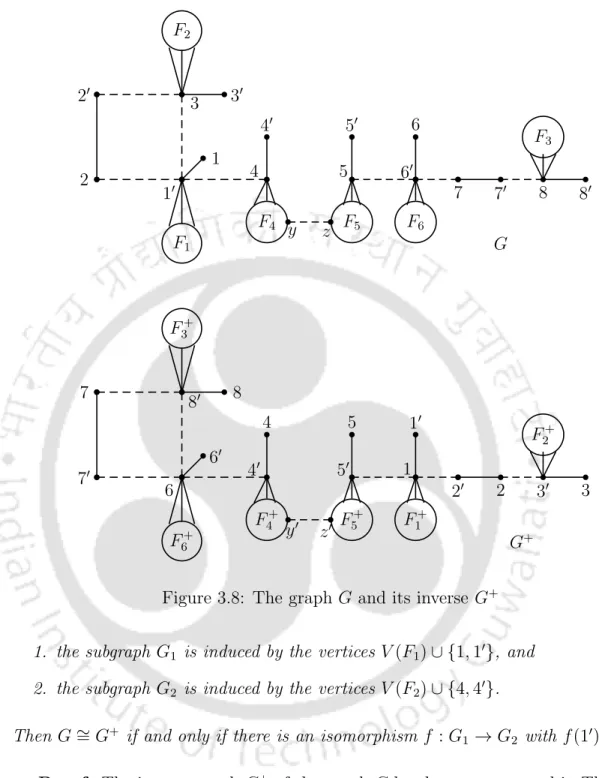
Conclusion
In the previous chapter, we saw that there are many graphs G ∈ Hu \ Hg with G+ ∈ Hu, but G is not isomorphic to G+. The inverse of the graph in Hg does not necessarily have to be in Hg. Q1 Is there a non-coronal graph in Hg such that G+ is in Hg (that is, G+ is unweighted and G+/M) is bipartite).
Are there graphs in Hg for which G+ ∈ Hnm\ Hg (that is, G+ is unweighted, G+/Mis not bipartite, and G+ has no mixed edges).
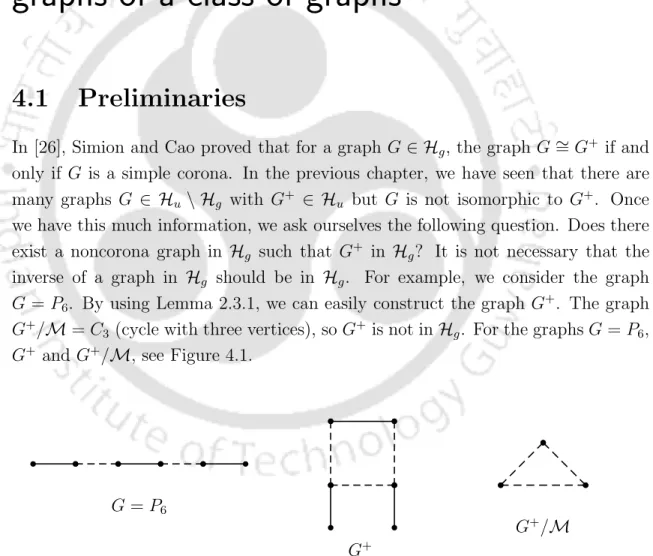
A path from itoj contains an odd (resp. even) number of non-matching edges, then every path from i to j must contain an odd (resp. even) number of non-matching edges. iii). Then the weight of the edge [i, j] in G+ is the total number of mm-alternating i-j paths in G. Hence, G+ is an unweighted graph if and only if the number of mm-alternating i-j paths is at most one. The equivalence of items ii) and iv) in Theorem 4.2.5 was previously observed in [26, Theorem 2], but we provided an alternative easy proof.
Let G ∈ Hg be a non-corona graph. i) the graphG has at most one mm-alternating path inG from one vertex to another vertex; .. ii) there are no mm-alternating paths in G of length 7. Using Remark 4.2.2, G has at most one mm-alternating path in G from one vertex to another vertex.
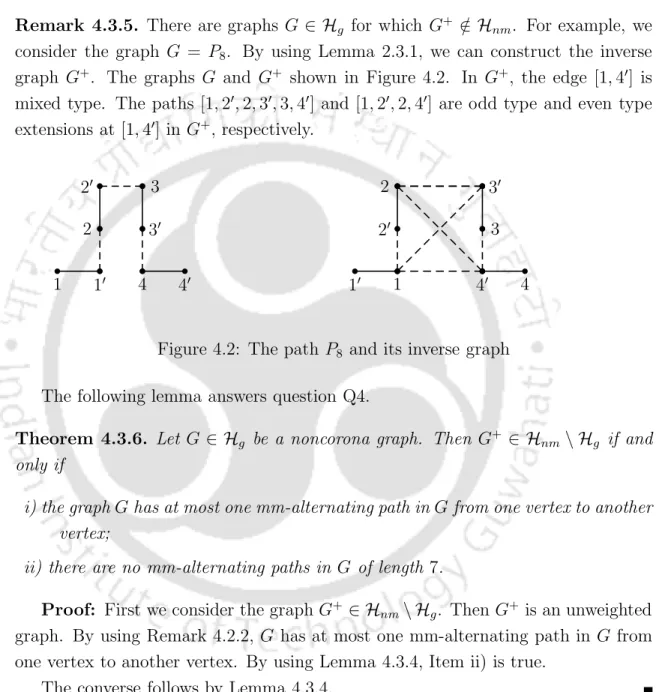
Conclusion
Construction of the class of inverse graphs of nonsingular trees 71
Since G is finite, this process cannot continue indefinitely, so we finally get a dependent vertex w of G that is adjacent to tow0 and G−w−w0 has a component that is only one edge [x, x0] . The final statement follows from the fact that wH([u, x]) is the number of mm-alternate paths from utoxinG, and when we delete uandu0 from each such path we get an alternate mm path from somevi tox inG. There is at most one alternate path mm from one vertex to another vertex in G.
Then Fk consists of the graphs of order 2k which appear as the inverse of the graphs in Hg.
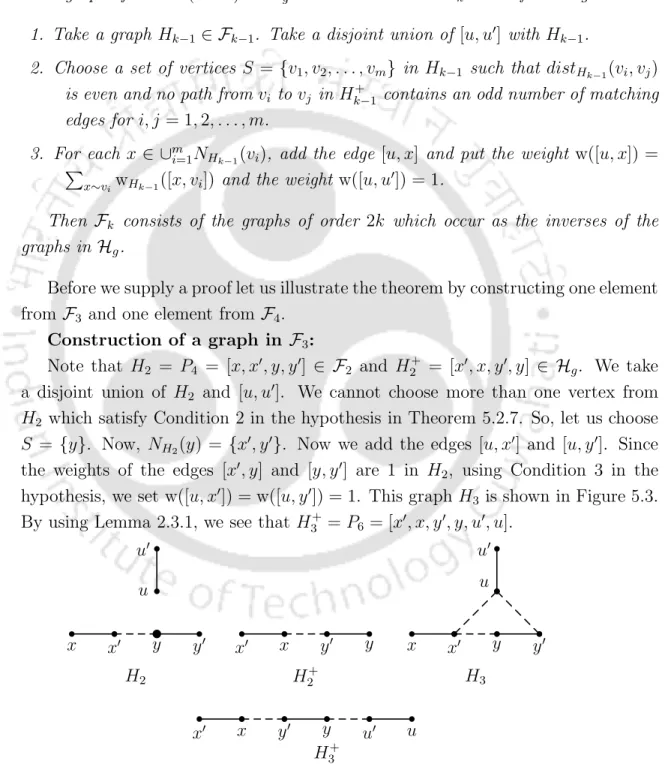
Conclusion
Now we show that every Hk ∈ Fk is the inverse of a graph G∈ Hg of order 2k. Therefore, any graph Hk ∈ Fk is the inverse of a graph in Hg of order 2k. Is it necessary that G+w exists for a weight function that is not a multiple of 11, the weight function of them all.
The graph of G shown in Figure 2.5 is in Hodd but not in Hg, and the graph shown in Figure 2.1 is in Hnmc but not in Hodd.
Inverses of weighted graphs in H odd
Finally, we show that the class Hg is the only subclass of graphs G in H, such that G+w exists for every w∈ WG that answers question Q4. Let G∈ H. Then the following are equivalents. i) The inverse G+w exists for all w∈ WG. ii) The graph G∈ Hg. By Lemma 6.2.7, the classHodd contains the graphs G such that G+w exists for any w∈ WG, or G+w does not exist for any w∈ WG.
That is, there is no graph G inHodd such that G+w exists for some w∈ WG but not for all w∈ WG.
By Lemma 2.3.9, the equality of the number of edges of type odd in any path from 1 toi is the same as that of any path from 1 toi. It follows that each fromitoj path must contain an even number of odd edges. Since each path i-j contains an even number of odd edges, we must have an odd number of even edges in Pmr(i, j).
Then we can create mi1 · · ·mip many such mm-alternating i-j paths and each path has an odd (resp. even) number of mismatched edges if p is even (resp. odd).
A class of graphs G ∈ H for which G + does not exist but G + w exists
Without loss of generality, we assume that P1 contains an even-type extension and P2 contains the corresponding even-type edge. An even-type extension has an even number of mismatched edges, then P1 contains an even (resp. odd) number of mismatched edges if and only if P2 contains an odd (resp. even) number of mismatched edges. Without loss of generality, we assume that P1 contains both extents of even type, P1 contains an edge of even type [u0k1, uk2], and P2 contains an edge of even type [u0l1, ul2].
The extension of even type contains an even number of mismatched edges, then P1 contains an even (respectively odd) number of mismatched edges if and only if P2 and P3 contain an odd (respectively even) number of mismatched edges.
Conclusion
Let T be a non-singular tree and ρ(T) the spectral radius of T. Then the following is equivalent. i) 1/ρ(T) is the smallest positive eigenvalue of T. ii) T ∼=T+ (T is isomorphic to its inverse graph T+). iii). Do we have a class larger than the class Hg, where all the four conditions i)–iv) are equivalent? Do we have counterexamples to show that no two of i)–iv) are generally equivalent.
It is natural to wonder whether statements i) – iv) of Theorem 7.1.2 are equivalent for the class of weighted non-singular trees.
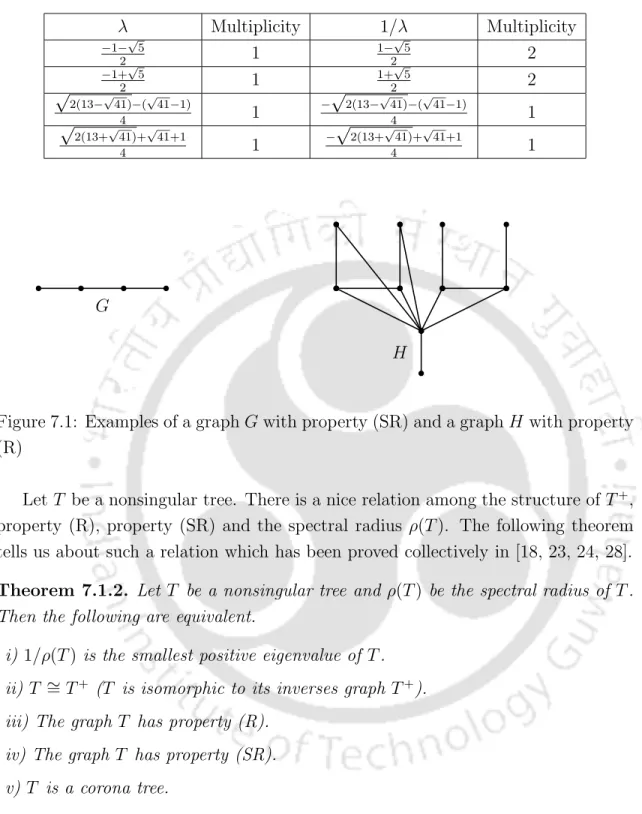
Reciprocal eigenvalue properties of graphs in H nmcs
Whether Theorem 7.1.3 is true even when allowing the weight of the non-matching edges to be any positive number. We show that statements i)–iv) in Theorem 7.1.2 are equivalent for the weighted graphs Gw, where G ∈ Hg and w ∈ WG. Then the following is equivalent. i) The number 1/ρ(G) is the least positive eigenvalue of G. ii) The graph G∼=G+. iii).
The graph G has property (SR). v) The graph G = HS, where H is a connected bipartite corona graph and S is a subset of non-matching edges of H such that every cycle in H has an even number of non-matching edges from S.
Property (SR) of unicyclic graphs in H
Then the graph (G− E)/M is not bipartite and G does not have any even type extensions, otherwise G+ exists. The graph G shown in Figure 7.2 is an example of a unicyclic graph G ∈ H such that G+ exists and is unicyclic, but G does not have property (SR). In [29], the authors showed that a non-corona unicyclic graph with property (SR) has one of three specified structures shown in Figures 3.5, 3.6 and 3.7.
Using Theorem 7.3.4, we see that there exists a more necessary structure shown in Figure 3.8 of a noncoron acyclic graph to have the (SR) property.
Counter examples
Graphs with property (SR) but not self-inverses
In G, the edges [u, v] and [x, y] are the only even-type edges and all other non-matching edges are odd-type. In the previous example, we saw that G has property (SR), but G+ does not exist, soGG+. The graphs GandG+ are not isomorphic because the highest degree vertex 5 inG+ is adjacent to a hanging vertex 2, but there is no hanging vertex adjacent to the highest degree vertex 4 inG.
A class of graphs with property (R) but not property (SR)
Therefore, the reciprocal of the zero of this polynomial is also the zero of this polynomial, and both have the same multiplicity. However, since there is an additional factor (x2 +x−1) in P(Gk;x), we see that zeros and reciprocal zeros do not have the same multiplicity.
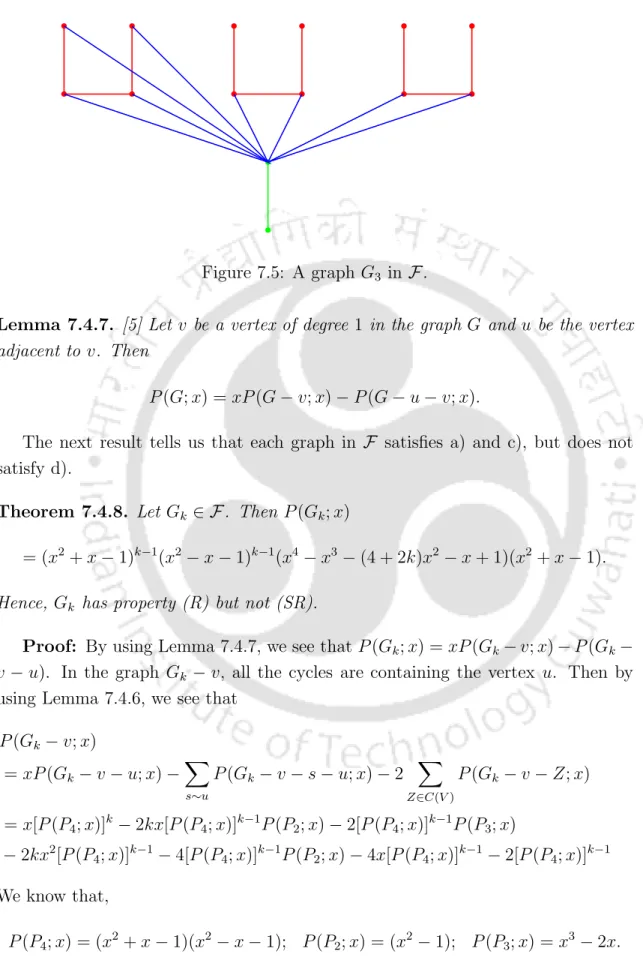
Graph G without property (R) but 1/ρ(G) is the least positive
Reciprocal eigenvalue properties of weighted graphs in H g
Proof: Using Lemma 7.5.1, we see that PM−1A(G+w)PM ≥A(Gw), where P is the permutation matrix given by the match. Since 1/ρ(Gw) is the smallest positive eigenvalue of Gw, we see that ρ(Gw) is the spectral radius of G+. Then the following are equivalent. i) 1/ρ(Gw) is the smallest positive eigenvalue. ii) Gw ∼=G+w. iii) Gw has property (R). iv) Gw has property (SR).
Are there any special structures of a graph G∈ Hg such that Gw satisfies one of the theorems of Theorem 7.5.3.
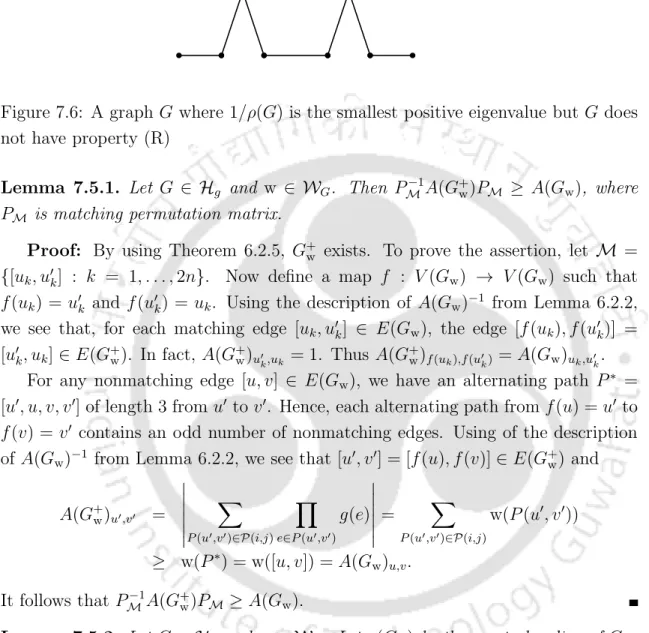
Conclusion
We noticed that there are invertible graphs in Hnm\ Hnmc, but we could not identify those graphs. The main hope for progress in self-inverse graphs seems to be identifying the self-inverse graphs in Hnmc\ Hnmcs. Then we try to identify the self-inverse bicyclic graphs in H. Reciprocal eigenvalue properties: The non-singular trees with property.
The main hope for progress in reciprocal eigenvalue properties appears to be studying the (SR) property of bicyclic graphs in H.
![Figure 2.2: A noninvertible graph H in H with undirected interval H[1, 4 0 ] = H The graph G shown in Figure 2.1 is nonunicyclic such that G/ M is not bipartite.](https://thumb-ap.123doks.com/thumbv2/azpdfnet/10448999.0/37.918.96.745.222.892/figure-noninvertible-graph-undirected-interval-figure-nonunicyclic-bipartite.webp)
